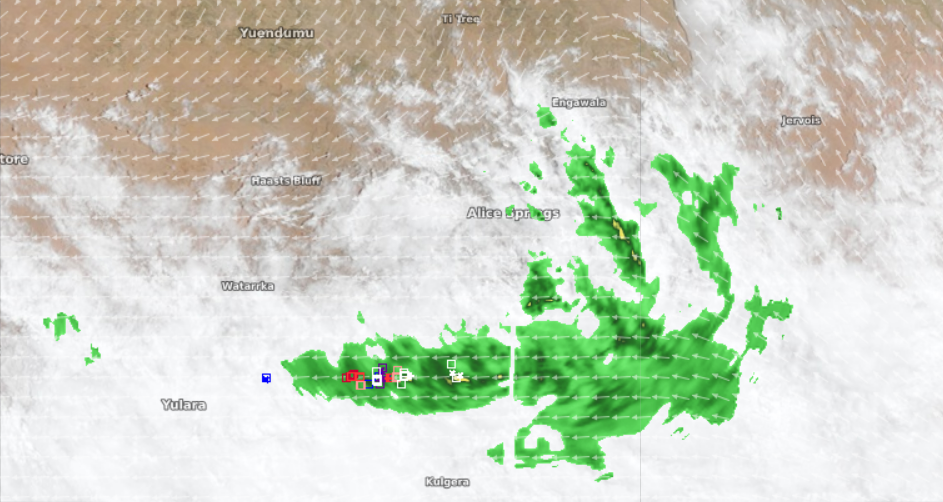Last Minute Rain in Alice Springs
The final day of March brought monthly record rain to central Australia. 20mm may not sound like much to us, but given that south NT had received little to no rain this month, this was a relief.
Alice Springs is located in a semi-arid region, sandwiched between three deserts: the Simpson Desert, the Great Sandy Desert and Great Victorian Desert. It gets most of its rain during the summer months from the north, with an average annual rainfall of 330mm (average between 1989 and 2018). Sources of rain include tropical systems which bring moisture to central Australia or the Northwest cloud bands coming from the Indian Ocean.
Rainfall over the area can at times be sporadic, especially during autumn and winter. On average, Alice Springs receives approximately 10mm of rain a month between June and September.

Fig 1. Satellite image of the storm over central Australia at 12:40pm on Friday 31st of March
Over the past 30 years, March rainfall in Alice Springs has been an average of 19.3mm, however, this year it only saw 1mm between March 1st and March 30th!
But yesterday, the dense clouds associated with an inland trough, brought some storms into Australia’s centre. This trough was fuelled by tropical moisture brought over from the Indian Ocean and resulted in 11mm of rain for Alice Springs by 9am on March 31stalong with around 240 lightning strikes across the area. Another 19.6mm fell in the 24 hours to 9am April 1st, including 8.2mm before midnight of March 31st.
This bumps up the March monthly rainfall to 12mm. Even with its last attempt, March fell short of the monthly average. Given that 37% of the area is used for agriculture, this may not be the best news for next seasons harvest. But imagine, if yesterday’s storm didn’t come, we probably wouldn’t have any NT grapes or mangoes next summer!